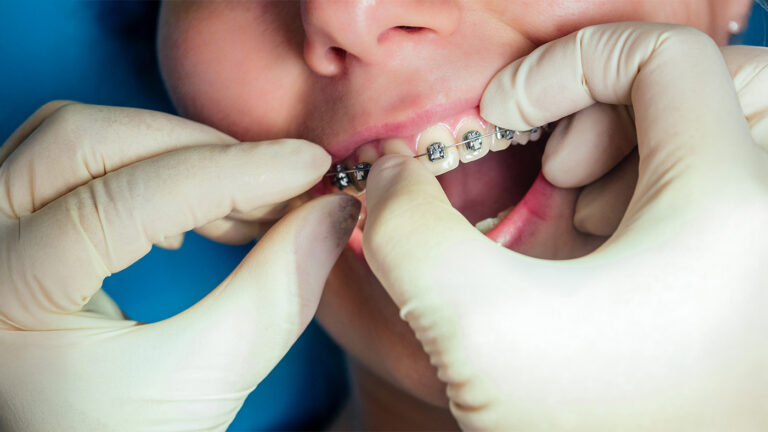What Are Dental Sealants?
Dental sealants are one of the most common preventive treatments available to children and teens. Sealants are a safe and effective way to reduce your child’s risk of cavities and can be applied as part of an ordinary preventive dental treatment plan.
Usually made of resin, sealants are thin protective coatings that work like a force field, protecting teeth from the destructive activity of harmful bacteria. Many parents think of them as a protective coating for teeth, a simple, long-lasting layer that helps guard the chewing surfaces of the back teeth against decay.
Sealants are applied to the top of teeth as a liquid, either clear or white, and then hardened through a quick curing process. Once they’ve hardened, the teeth can be used normally for chewing, speaking, and smiling.
Sealants at a Glance
- What they are: A thin, tooth-colored or clear protective coating for children’s teeth.
- Where they go: Mainly on the grooves of the back teeth (molars and premolars).
- What they do: Help keep food and bacteria out of deep pits and fissures that are hard to clean.
- Who they help: Children and teens, especially those at higher risk for cavities.
- How they fit in: They work together with brushing, flossing, and fluoride to protect teeth.
Do Sealants Protect Teeth from Cavities?
Sealants are often placed only on the molars and premolars, the teeth toward the back of the mouth. They have more complicated surface grooves where food particles and bacteria can gather. Those bacteria consume sugars from the food you eat and produce acids that erode the protective enamel on the surface of teeth, leading to cavities and tooth decay.
Sealants create a long-term barrier that protects the teeth from decay. However, they are not a replacement for daily brushing and flossing. Sealants may be beneficial for patients of any age, but are typically recommended for children and teenagers. A dentist may recommend sealants as soon as the molars or premolars show up to protect them during the teenage years, when they are at the highest risk of cavities.
Why This Protective Coating Helps Prevent Cavities
Sealants work by covering the tiny pits and fissures on the chewing surfaces of teeth, areas where toothbrush bristles can’t always reach. This protective coating reduces the risk of cavities by helping to keep bacteria and food particles out of the deep grooves in the molars and premolars.
This is especially important for children, whose permanent teeth are still new and more vulnerable to decay. By adding a layer of defense early, this protective coating for teeth helps guard them during the years when kids are most cavity-prone.
How do dental sealants work?
You don’t need to do anything special to prepare for dental sealants; they can be applied at the end of an ordinary dental visit or as a separate visit. The process is non-invasive and quick. Here’s what you can expect:
- Cleaning: The teeth are cleaned to remove debris from the grooves.
- Surface Preparation: The tooth surfaces are slightly roughened with an etching solution “tooth shampoo” to create a better bonding surface.
- Rinse and Dry: The teeth are rinsed and dried to make them ready for sealant.
- Sealant Application: Sealant is painted onto the tooth enamel.
- Curing: After application, the sealant cures in seconds with the aid of a curing light. Once hardened, the treatment is finished.
Sealants can last for up to five years, provided they are checked regularly during dental visits. They may need to be reapplied over time due to ordinary wear and tear. Children can resume their normal eating and drinking habits immediately after sealants are applied.
What are the benefits of dental sealants?
The first molars usually erupt around age six, with the second molars following around age twelve. Applying sealants when those teeth first emerge can reduce the risk of cavities by more than half and protect at-risk teeth for years to come.
- Quick and Painless: Dental sealants offer high rewards and low costs, both in terms of time and effort, as well as actual expenses. Some medical insurance plans, as well as nearly all dental insurance plans, cover dental sealants. They last between two and five years, protecting the teeth during the most cavity-prone years.
- Blocks Bacteria: Even the best brushers can’t reach all of the nooks and crannies in the mouth. In fact, some grooves come to such a narrow point that the bristles of a toothbrush are too thick to reach the furthest depths. Sealants target trouble areas such as the uneven grooves of the molars and premolars to prevent the formation of cavities. Sealants reduce deep grooves in the teeth, filling in spaces where food particles and damaging bacteria can hang out.
- Fewer Cavities: Kids without sealants are up to three times more likely to develop cavities or tooth decay, according to the Cleveland Clinic. Sealants prevent 80% of cavities in the molars and premolars (where 90% of cavities occur) within two years following application.
Sealants vs. Other Preventive Treatments
- Sealants: A protective coating placed on the chewing surfaces of back teeth to help block bacteria and food.
- Fluoride: Helps strengthen tooth enamel throughout the entire mouth.
- Brushing & Flossing: Daily habits that remove plaque and food particles from all tooth surfaces and between teeth.
Sealants don’t replace good brushing and flossing—they simply add extra protection where kids need it most. In many cases, sealants, fluoride, and good home care work together as part of a complete cavity-prevention plan.
When should children get dental sealants?
It’s commonly believed that baby teeth don’t need protection because they fall out and get replaced; however, baby teeth set the foundation for lifelong dental health. Cavities and tooth decay in the baby teeth often lead to more complicated dental problems down the line. Applying sealants to cavity-prone teeth as soon as they erupt can help prevent childhood cavities and promote lifelong dental health.
Once your child’s permanent teeth have grown in, sealants can also be applied to avoid cavities and tooth decay.
Sealants may not be appropriate for children with partially erupted teeth. They also can’t be applied to teeth with existing damage, fillings, or crowns. And while sealants do provide protection, brushing and flossing remain the best ways to keep your child’s smile healthy and bright.
Life After Sealants: What Parents Can Expect
Because sealants harden immediately under a curing light, children can usually return to everyday activities like school, sports, and snacks right after their appointment. The teeth may feel a little different at first, especially when your child runs their tongue over the chewing surfaces, but most kids adjust quickly.
Regular brushing, flossing, and dental checkups are still essential. At each visit, your child’s dentist will check the sealants to make sure they are intact and working as intended and let you know if any areas need to be repaired or retreated over time.
Is It Time to Ask About Sealants?
Talk with the team at Families First Pediatric Dentistry to see if and when dental sealants are right for your child! At your visit, your child’s dentist can examine their teeth, discuss their cavity risk, and recommend a preventive plan that may include sealants, fluoride treatments, and personalized at-home care tips.




